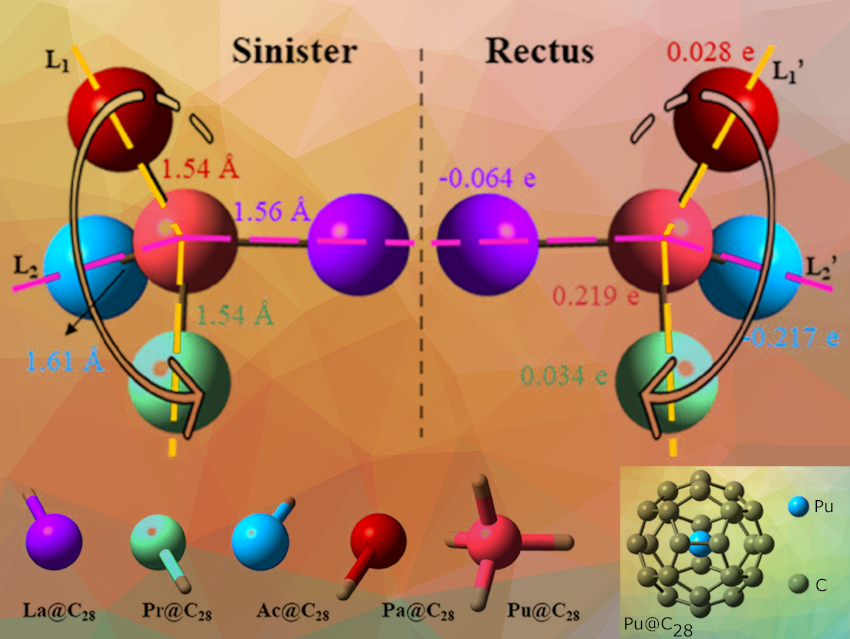Chirality, a fundamental property of molecules, is closely linked to the origin of life. However, traditional methods of constructing chiral molecules face limitations due to the limited types of natural atoms available for creating chiral centers. In contrast, artificial superatomic units offer a rich variety of options and garner attention for their orbital angular momentum symmetry, akin to the electron shell arrangement in atoms. Using superatoms as centers and simulating inter-atomic bonding behavior through inter-superatomic bonding shows promise for constructing novel asymmetric chiral molecules.
Zhigang Wang, Jilin University, China, Yulei Shi, Capital Normal University, China, and colleagues have presented the first assembly of chiral molecules using superatoms as the basic units. The team used the Pu@C28 superatom, capable of forming four chemical bonds, as a chiral center (pictured). They bonded it with four other superatoms capable of forming single chemical bonds. A stable asymmetric chiral assembly was theoretically achieved, leading to the proposal of the concept of “superatomic-based chirality”.
The chiral properties of he superatomic assemblies were confirmed through vibrational circular dichroism and electronic circular dichroism spectroscopy. Particularly, vibrational spectroscopy analysis revealed that the chiral vibrational frequencies of the superatomic-based assemblies can be as low as a few wavenumbers, significantly expanding the range of chiral spectroscopy. The discovery of very low vibrational frequencies allows the researchers to study chiral phenomena in previously unexplored regions.
Overall, these findings provide a theoretical reference for enriching the diversity of chiral structures at the atomic level and offer a perspective for the bottom-up realization of demand-oriented superatomic-based assemblies.
- Superatomic-based chirality: Asymmetric structures constructed by superatoms,
Famin Yu, Rui Li, Xinrui Yang, Yulei Shi, Zhigang Wang,
Aggregate 2024.
https://doi.org/10.1002/agt2.539


